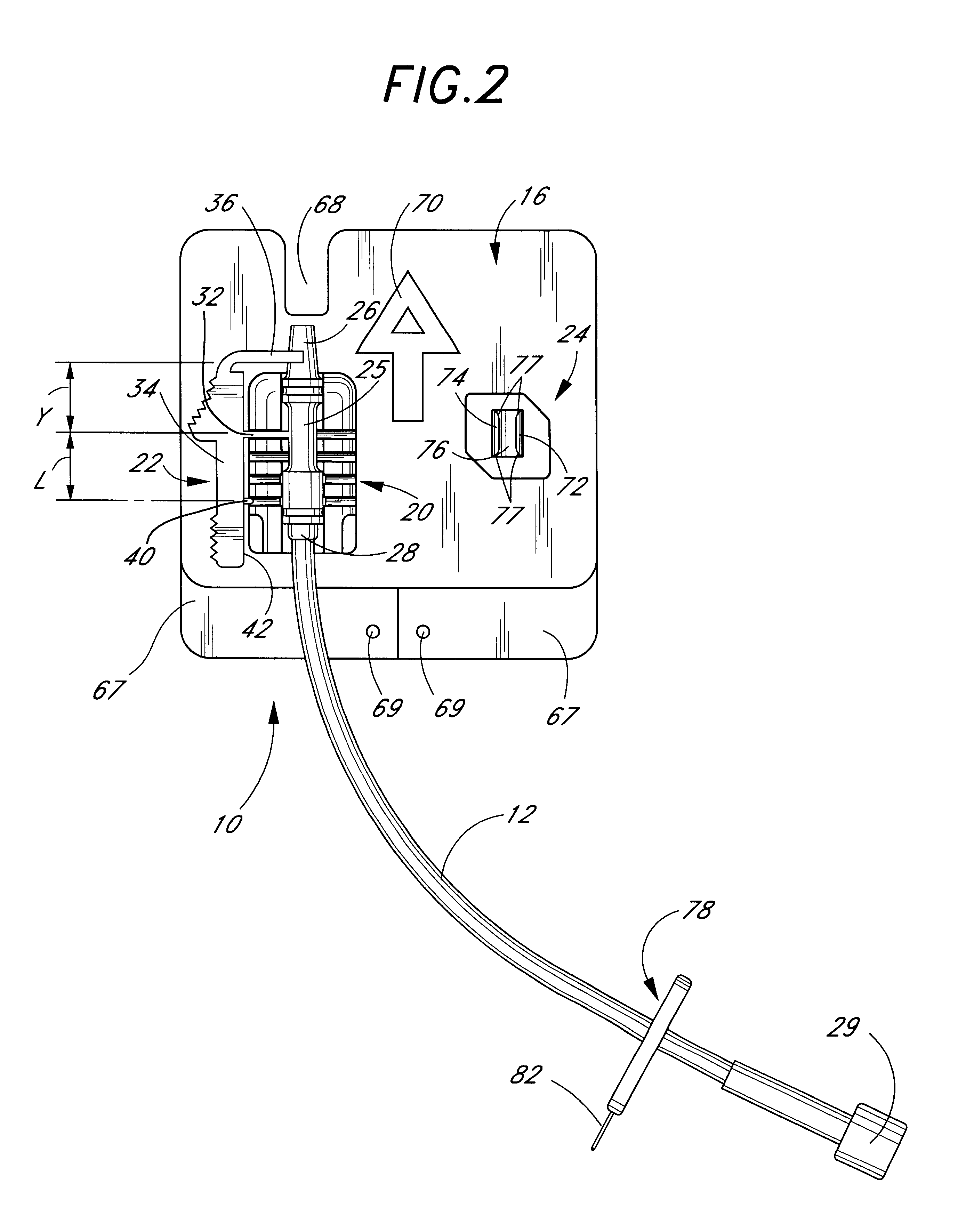Catheter anchoring system
a catheterization system and catheterization technology, applied in the field of catheterization systems, can solve the problems of difficult and cumbersome taping procedures, affecting the quality of life of patients, and requiring frequent disconnection of catheterization processes,
- Summary
- Abstract
- Description
- Claims
- Application Information
AI Technical Summary
Benefits of technology
Problems solved by technology
Method used
Image
Examples
Embodiment Construction
FIG. 1 illustrates in perspective view a catheter anchoring system 10 in accordance with the present invention. The anchoring system 10 securely connects a tube 12 (e.g., a fluid supply tube) to an indwelling catheter 14 and maintains the catheter 14 in the desired indwelling position. The anchoring system 10 is designed for rapid attachment to the catheter 14 and to the patient, without requiring precise alignment or positioning of the components of the anchoring system 10.
Moreover, sturdy anchoring of the catheterization system is achieved without the use of surgical tape. For most catheterization, the anchoring system is attached to the patient only once. Although the fluid supply tubing 12 may be replaced every 24 to 48 hours for intravenous catheterization, the components of the anchoring system 10 attached to the patient remains in place. Thus, surgical tape need not be applied and removed from the patient's skin on multiple occasions.
The catheter anchoring system 10 principal...
PUM
 Login to View More
Login to View More Abstract
Description
Claims
Application Information
 Login to View More
Login to View More - R&D
- Intellectual Property
- Life Sciences
- Materials
- Tech Scout
- Unparalleled Data Quality
- Higher Quality Content
- 60% Fewer Hallucinations
Browse by: Latest US Patents, China's latest patents, Technical Efficacy Thesaurus, Application Domain, Technology Topic, Popular Technical Reports.
© 2025 PatSnap. All rights reserved.Legal|Privacy policy|Modern Slavery Act Transparency Statement|Sitemap|About US| Contact US: help@patsnap.com



